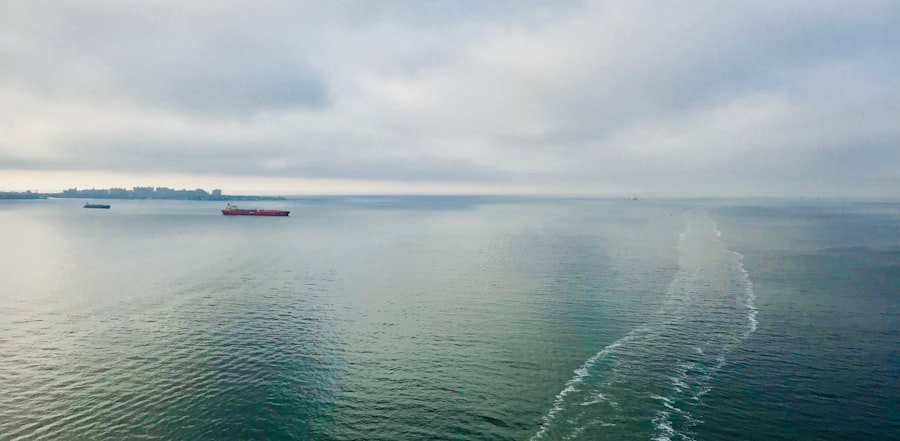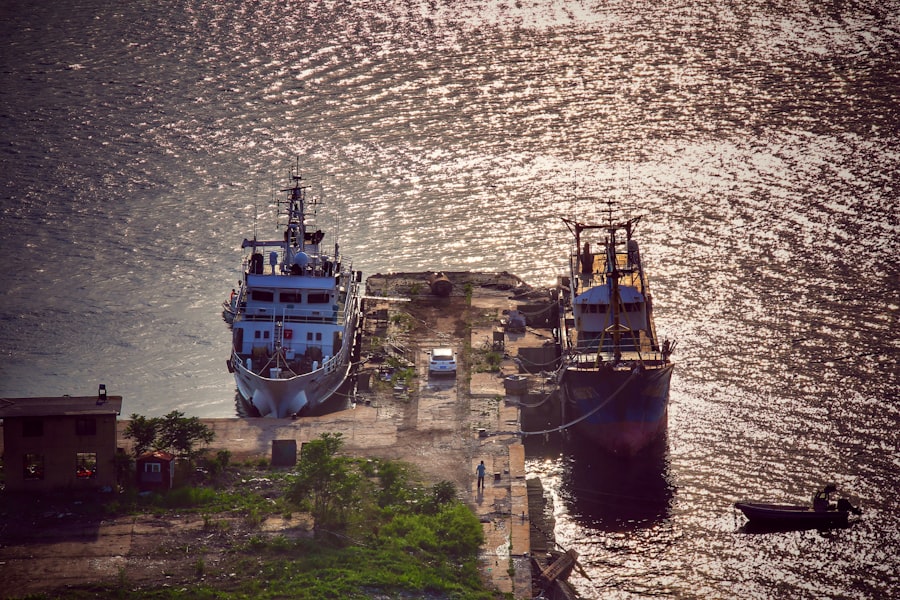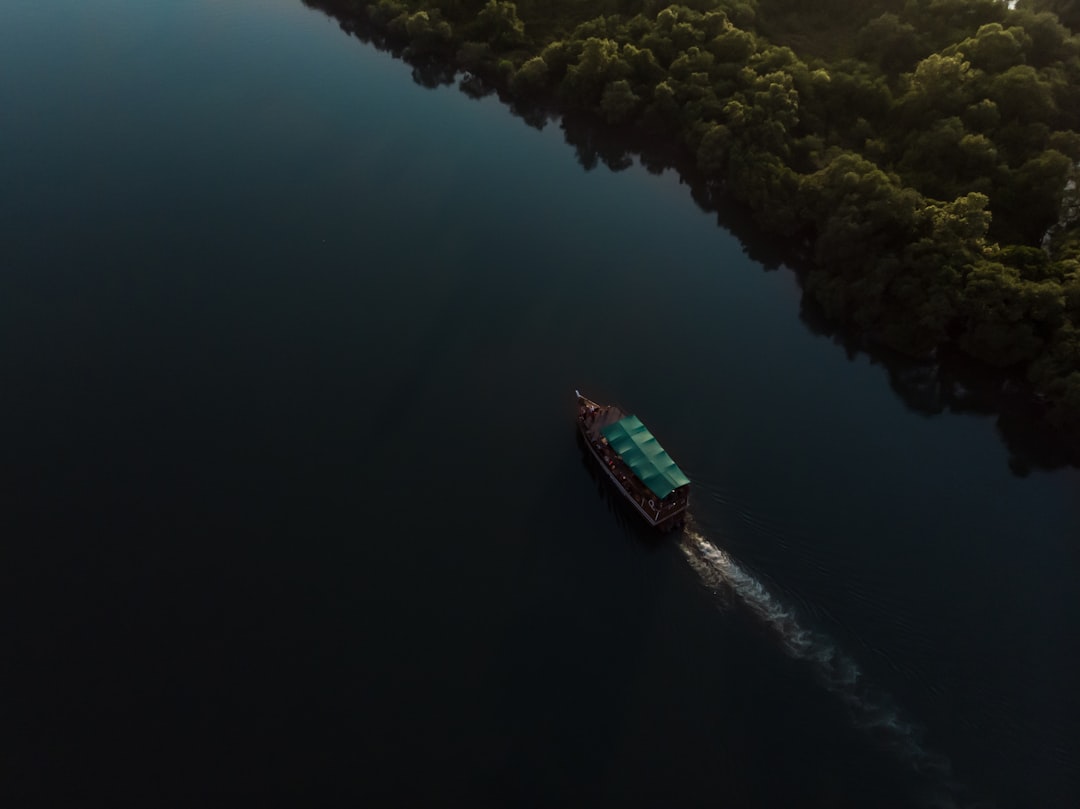The Drake Passage and the Panama Canal are two of the most significant waterways in the world, each serving unique purposes and presenting distinct challenges. The Drake Passage, located between the southern tip of South America and Antarctica, is renowned for its turbulent waters and unpredictable weather. It is often considered one of the most treacherous maritime routes, attracting adventurers and researchers alike who seek to explore the remote regions of the Southern Ocean.
In contrast, the Panama Canal, an engineering marvel completed in the early 20th century, connects the Atlantic and Pacific Oceans through a series of locks and artificial lakes. This canal revolutionized maritime trade by drastically reducing travel time for ships navigating between these two vast oceans. Both waterways play crucial roles in global shipping and exploration, yet they embody contrasting characteristics.
The Drake Passage is a natural waterway that showcases the raw power of nature, while the Panama Canal represents human ingenuity and determination. Understanding these two routes is essential for anyone interested in maritime navigation, environmental science, or global trade. As they delve deeper into the geographic, historical, and logistical aspects of these waterways, one can appreciate their significance in shaping maritime history and contemporary shipping practices.
Key Takeaways
- The Drake Passage and Panama Canal are two key routes for maritime travel, each with its own unique characteristics and challenges.
- The Drake Passage is known for its remote and harsh environment, while the Panama Canal offers a more controlled and engineered passage.
- The historical significance of the Drake Passage lies in its association with early explorers and adventurers, while the Panama Canal is a feat of modern engineering with global economic importance.
- Navigating the Drake Passage poses hazards such as extreme weather and icebergs, while the Panama Canal presents challenges related to locks and narrow passages.
- When comparing time and distance, the Drake Passage offers a more direct route between the Atlantic and Pacific Oceans, while the Panama Canal provides a shortcut for ships traveling between the two oceans.
Geographic and Environmental Differences
Geographically, the Drake Passage is characterized by its narrow expanse of water, measuring approximately 800 kilometers (500 miles) wide at its widest point. It serves as a natural barrier between South America and Antarctica, with depths reaching over 4,000 meters (13,000 feet) in some areas. The passage is known for its strong currents and rough seas, which are influenced by the confluence of several oceanic currents, including the Antarctic Circumpolar Current.
This unique geographic setting creates a dynamic marine environment that supports a diverse range of wildlife, from seabirds to marine mammals. In stark contrast, the Panama Canal spans approximately 82 kilometers (51 miles) across the Isthmus of Panama. It features a series of locks that raise and lower ships as they traverse the varying elevations of the land.
The canal’s construction involved significant alterations to the natural landscape, including the creation of Gatun Lake, which serves as a key component of the waterway. The environmental impact of this engineering feat has been profound, leading to changes in local ecosystems and wildlife habitats. While both waterways are vital for navigation, their geographic and environmental contexts are vastly different, influencing not only their navigational characteristics but also their ecological significance.
Historical Significance and Importance

The historical significance of the Drake Passage is deeply intertwined with exploration and scientific discovery. It was named after Sir Francis Drake, an English explorer who navigated these waters in the late 16th century during his circumnavigation of the globe. The passage has since become a critical route for researchers studying climate change, oceanography, and marine biology.
Its challenging conditions have also made it a rite of passage for sailors and adventurers seeking to test their mettle against nature’s fury. Conversely, the Panama Canal’s historical importance lies in its role as a catalyst for global trade. Completed in 1914 after decades of planning and construction, the canal transformed maritime commerce by allowing ships to bypass the lengthy and perilous journey around Cape Horn at the southern tip of South America.
This monumental project not only facilitated faster shipping routes but also significantly impacted economic development in Central America and beyond. The canal’s strategic location has made it a focal point for international trade relations and geopolitical interests throughout the 20th century and into the present day.
Navigational Challenges and Hazards
| Category | Metrics |
|---|---|
| Navigation Challenges | Obstacles encountered |
| Navigation Hazards | Number of accidents |
| Weather Conditions | Frequency of adverse weather |
| Equipment Failures | Instances of equipment malfunction |
Navigating the Drake Passage presents numerous challenges due to its notorious weather patterns and rough seas. Sailors must contend with strong winds, large swells, and rapidly changing conditions that can turn calm waters into a tempest within minutes. The passage is often described as a sailor’s nightmare, with waves reaching heights of up to 30 feet during storms.
These hazards require vessels to be well-equipped and crews to be highly skilled in seamanship to ensure safe passage through this formidable stretch of water. In contrast, while the Panama Canal is an engineering marvel that simplifies navigation between two oceans, it is not without its own set of challenges. The canal’s locks require precise maneuvering and timing, as vessels must be raised or lowered through different elevations.
Additionally, the narrow channels can be congested with traffic, necessitating careful coordination among ships to avoid collisions. The presence of floating debris and changing water levels due to rainfall can also pose navigational hazards. Thus, both waterways demand a high level of expertise from mariners but in very different ways.
Time and Distance Comparison
When comparing travel times and distances between these two routes, significant differences emerge that can influence shipping decisions. The Drake Passage offers a direct route for vessels traveling between South America and Antarctica or vice versa. However, due to its unpredictable conditions, ships may experience delays or extended travel times as they navigate through rough waters.
On average, crossing the Drake Passage can take anywhere from two to four days depending on weather conditions and vessel speed. In contrast, traversing the Panama Canal significantly reduces travel time for ships moving between the Atlantic and Pacific Oceans. Without the canal, vessels would need to navigate around Cape Horn, adding approximately 8,000 nautical miles to their journey.
This time efficiency has made the Panama Canal an essential artery for international trade.
Cost and Logistics Comparison

The cost implications of using either the Drake Passage or the Panama Canal are substantial factors for shipping companies to consider. Navigating through the Drake Passage may involve lower direct costs since it does not require tolls or fees associated with canal transit; however, the potential for delays due to adverse weather can lead to increased operational costs. Additionally, vessels may need to carry extra fuel or provisions to account for unpredictable conditions, further impacting overall expenses.
On the other hand, while using the Panama Canal incurs transit fees based on vessel size and cargo type, these costs are often offset by the savings in time and fuel efficiency gained from avoiding longer routes around South America. The logistics involved in canal transit are well-established, with scheduling systems in place to manage traffic effectively. For many shipping companies, the benefits of using the Panama Canal far outweigh the costs associated with its use, making it a preferred choice for many maritime operations.
Wildlife and Scenery
The ecological richness of both waterways offers unique opportunities for wildlife observation and appreciation of natural beauty. The Drake Passage is home to an array of marine life that thrives in its cold waters. Seabirds such as albatrosses and petrels soar above while whales like humpbacks and orcas can often be spotted breaching in search of food.
The stark beauty of Antarctica’s icy landscapes adds to the allure of this passage for those seeking adventure or scientific exploration. In contrast, the Panama Canal presents a different kind of biodiversity within its tropical rainforest surroundings. The lush vegetation along its banks is teeming with wildlife, including monkeys, sloths, and a variety of bird species that inhabit this vibrant ecosystem.
Visitors to the canal can experience guided tours that highlight both its engineering marvels and its rich natural environment. While both waterways offer stunning scenery and wildlife encounters, they do so in distinctly different ecological contexts.
Weather and Climate Considerations
Weather plays a pivotal role in determining navigational safety and efficiency in both waterways. The Drake Passage is infamous for its volatile weather patterns characterized by strong winds and sudden storms that can arise without warning. Mariners must remain vigilant as conditions can change rapidly; thus, understanding weather forecasts is crucial for safe passage through this region.
Conversely, the climate surrounding the Panama Canal is tropical, with distinct wet and dry seasons that influence navigation schedules. Rainfall can lead to fluctuating water levels within the canal system; however, it generally does not pose significant hazards compared to those found in the Drake Passage. The predictable nature of weather patterns in this region allows for more reliable planning for shipping operations.
Safety and Security Measures
Safety measures are paramount when navigating either waterway due to their inherent risks. In the Drake Passage, vessels are equipped with advanced navigation systems and safety gear designed to withstand harsh conditions. Crews undergo rigorous training to prepare for emergencies such as man overboard situations or equipment failures during rough seas.
In contrast, safety protocols within the Panama Canal focus on managing traffic flow through its locks and channels. Vessels are required to follow strict guidelines regarding speed limits and communication with canal authorities to ensure safe transit through this busy waterway. Additionally, security measures are in place to protect against potential threats such as piracy or terrorism that could impact shipping operations.
Cultural and Educational Opportunities
Both waterways offer rich cultural experiences that enhance understanding of their historical significance. The Drake Passage serves as a gateway to Antarctica’s unique ecosystems and indigenous cultures that have adapted to life in extreme conditions. Researchers often engage with local communities during expeditions to learn about their traditions and ways of life.
The Panama Canal provides educational opportunities through visitor centers that showcase its construction history and engineering feats. Tourists can explore exhibits detailing the challenges faced during its building while gaining insight into its impact on global trade dynamics.
Choosing the Best Route for Your Journey
Ultimately, choosing between traversing the Drake Passage or utilizing the Panama Canal depends on various factors including destination goals, time constraints, budget considerations, and personal preferences regarding adventure versus efficiency. For those seeking an exhilarating journey filled with natural wonders and challenges posed by Mother Nature herself, navigating through the Drake Passage may be an unforgettable experience. Conversely, if time efficiency and logistical convenience are paramount—especially for commercial shipping—then opting for transit through the Panama Canal is likely more advantageous given its established infrastructure designed specifically for maritime traffic management.
Each waterway offers distinct advantages tailored to different types of journeys; thus understanding their unique characteristics allows travelers to make informed decisions that align with their aspirations on the high seas.
The Drake Passage and the Panama Canal are two critical maritime routes that serve distinct purposes in global navigation. While the Panama Canal offers a man-made shortcut connecting the Atlantic and Pacific Oceans, the Drake Passage is a natural sea route located between the southern tip of South America and Antarctica. Each route presents unique challenges and advantages for maritime travel. For those interested in exploring more about these fascinating waterways and their geographical significance, you can read a related article on the topic by visiting this page. This article delves into the historical and contemporary importance of these routes, providing a comprehensive understanding of their roles in global trade and exploration.
WATCH NOW! Drake Passage: Earth’s Deadliest Waters Revealed
FAQs
What is the Drake Passage?
The Drake Passage is the body of water between the southern tip of South America and the northern tip of the Antarctic Peninsula. It is known for its rough seas and challenging sailing conditions.
What is the Panama Canal?
The Panama Canal is a man-made waterway that connects the Atlantic Ocean to the Pacific Ocean. It cuts across the Isthmus of Panama and is a key route for international maritime trade.
What are the main differences between the Drake Passage and the Panama Canal?
The Drake Passage is a natural body of water known for its rough seas and challenging sailing conditions, while the Panama Canal is a man-made waterway designed to facilitate maritime trade and shorten travel distances between the Atlantic and Pacific Oceans.
Which route is more commonly used for maritime trade?
The Panama Canal is the more commonly used route for maritime trade, as it provides a shorter and more controlled passage between the Atlantic and Pacific Oceans.
What are the main challenges of sailing through the Drake Passage?
The main challenges of sailing through the Drake Passage include rough seas, strong winds, and unpredictable weather conditions. It is known for its notorious reputation as one of the roughest stretches of water in the world.
What are the advantages of using the Panama Canal for maritime trade?
The Panama Canal offers several advantages for maritime trade, including shorter travel distances, reduced fuel consumption, and the ability to bypass the treacherous waters of the southern tip of South America.
